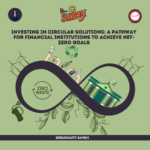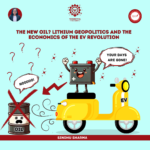Anuprash Baruah & Abraham Mathew
“And more than the quality of its institutions, what distinguishes a developed country from a developing one is the degree of consensus in its politics, and thus its ability to take actions to secure a better future despite short-term pain.” – Raghuram Rajan – Fault Lines
This quote sums up India’s direction with demonetization, our balancing act of a budget and no change in the repo rate as of yesterday.
Consumer durable goods are purchased with the intention of keeping them for a long duration. The consumption of durable goods is considered similar to an investment. This is so because they are bought every few years. In this insight, we try to evaluate the near future outlook for the industry in the light of the Union budget.
Industry Size (2016-17)
The industry is divided into two major segments:-
• Household appliances – 66,620 Crore INR
• Gems and jewellery
o Export – 2,39,600 Crore INR
o Domestic – 2,70,000 Crore INR
Major impacts:
- Decrease in taxable income for 2.2-5 Lakh INR bracket: This will lead to an increase in discretionary income, thus increasing demand for jewellery and household appliances. There are 2 Crore people that will benefit from this reduction.
- 2% increase in employment generation activities like MNREGA: The government is cushioning the demonetisation through subsidies. They are using employment as a sustainable way to boost consumption.
- Increase in capital expenditure: The 10.7% jolt in capital expenditure will have positive impacts on employment and income multipliers. Increases : Power(51%), Road transport(31%), Rail(19%), Shipping(16%).
- Increase in power expenditure: More access to power will also boost household appliances demand in the long run.
- Rural sector support: This includes increasing coverage under crop insurance (to 40%) along with increasing the base of subscribers. Also, there is continued support for rural road construction and MNREGA. According to CRISIL: “A study on the consumption patterns of workers benefitting from the rural roads program shows workers tend to allocate a larger proportion of their discretionary spending on durable goods (new and second hand), education, paan, tobacco, intoxicants, toiletries, and household commodities. The sectors producing them, therefore, can expect some boost due to budgetary measures”. Therefore we can expect a boost in demand. According to Godrej appliances, they are focusing on releasing more entry level products as this is the area with high demand and growth in the rural sector. We can expect other players to target the same segment.
- Pent-up demand from demonetisation impact: There is a current pent-up demand from demonetisation, it is expected to be satisfied in FY2018. Being a durable good, the decrease in income will only delay the consumption and not eliminate the demand.
- Growth of organized players (only gems and jewellery): Due to demonetisation, the gems and jewelry unorganized sector took a hit. This will strengthen the market standing of the organized players.
- GST implementation: If and when GST is implemented, it will result in up to 30% savings on logistics costs to consumer durable companies. This industry is said to be the biggest gainer from GST. Overall, it is a positive outlook for consumer durables. We can also see more of a rural focus entering the industry.










Precise and too the point. A very valuable overview.